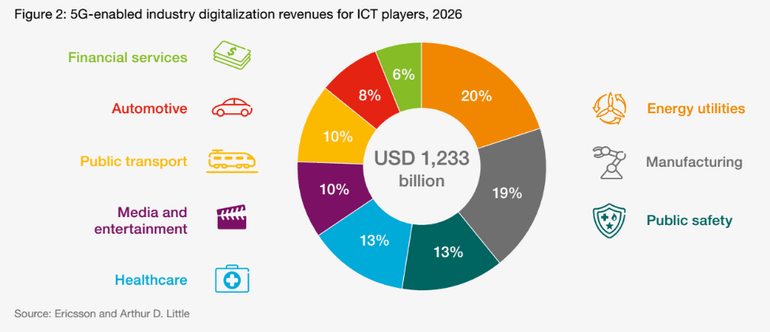5G and the Evolution of Mobile Networks

“5G is the fifth generation of cellular mobile communications. It succeeds the 4G, 3G and 2G systems. 5G performance targets high data rate, reduced network latency, energy saving, cost reduction, higher system capacity, and massive device connectivity”
Wikipedia
5G networks, just like its predecessor 4G LTE and WiMAX, is expected to greatly increase available bandwidth with improved end-to-end performance providing a better end user experience. In the most basic of terms, 4G LTE was the long-term evolution of Radio Access Networks (RAN) and 5G is the next iteration.
Wireless carriers have invested billions of dollars into their networks. They must look for ways to increase revenue while delivering more value to the end user. That continues to drive new devices in the hands of the consumer. The demand for more efficiencies, bandwidth, and coverage has pushed carriers towards a decentralized deployment model.
Network Virtualization Remains in The Early Stages
Service providers monitor and review technology for advancements that will help deliver faster and less expensive networks. For the past year or more they have looked into areas of Network Function Virtualization (NFV) and automation to support their advancements. Mobile network operators are investing heavily in reducing delays and errors through repetitive processes as they build and add capacity to their existing 4G networks.
Virtualization and Software Defined Networks (SDN) improvements are driving a shift from hardware to software. SDN is promising but it’s not a panacea as purpose-built hardware still remains the preferred choice. NFV and SDN have offered service providers an alternative to methods of old that included dedicated appliances sitting idle. The age of virtualization remains in the early stages. Hardware manufacturers and service providers are betting heavy on the acceptance and success of virtualized functions.
Software development continues at a breakneck speed to meet timelines and demands to more integrated solutions that easily scale and reduce operational overhead at the same time.
Trillion-Dollar Opportunities in 5G
Is 5G worthy of the hype that has been circling for months? It’s still early in the process but from the activity the answer needs to be a loud and assuring “Yes!” 5G technologies open up more than $1.2 trillion in opportunities by 2026 according to Ericsson. In the chart below, you’ll find a breakout of 5G-enabled businesses and their projected revenues.

5G is a reality and its impact extend beyond the typical mobile network carriers/operators such as ATT, Verizon, T-Mobile and Sprint in the US and overseas. 5G promises to enable more connectivity and flexibility that will drive additive functions throughout all components supportive of a mobile carrier’s network.
RAN access providers face the question of how to support the ever-increasing appetite for cutting the cord. How can we use our mobile devices in more ways than ever thought possible as the end user goes about their daily tasks? This mobility, whether it’s tied to a carrier’s technology or even a simple Wi-Fi home network, reaches all corners of our life.
The reach extends from the clouds to the data center environments and continues to drive capacity needs supported by both legacy appliances and the ever-increasing virtual environments. This continued appetite for consumption has opened opportunities for all facets of technology and their associated vendors.
5G, the Next Revolution in Network Infrastructure
Rail transportation was an innovation that disrupted existing infrastructure and established entirely new business opportunities. Railroads created a vast network, connecting distant areas that were practically inaccessible. Further and faster travel of people and cargo created new business opportunities that were seemingly impossible at the time.
For example, the rails allowed a cattle farmer in the American mid-west to sell his beef in New York City, via refrigerated cars. That was an entirely new market, one he couldn’t have serviced without new infrastructure. The rancher could grow his herd with all those new customers. This also created more demand on ice, another business opportunity. Unforeseen business opportunities were created by building out new infrastructure.
The vast network of rails created opportunities that were previously impossible, and largely unpredictable. Business could be conducted coast to coast, and beyond a country’s borders Those that jumped in and traded goods created revenue like never seen before. Mobile networks, and the internet in general, have another opportunity beyond rails. They not only increase the market for goods, they also expand the opportunity for services. Some of these services are only imaginable at this point.
5G Mobile Network Evolution
The build out of rail transportation altered the course of history around the world. The build out of 5G networks will have an evolutionary impact upon every mobile subscriber and business in the world.
The fundamental market forces of the evolution in networks is not based on wired or wireless infrastructure. Companies are currently focused on upgrading existing mobile networks. Whereas at the exact same time NFV, SDN and IoT are all ramping up to utilize the next generation of mobile networks.
Software solutions are easier to move from concept to production and many times offer a lower upfront investment cost. All of this adds up to help drive even more needs into all service providers, including the wired infrastructure.
5G and IoT will be demand driven. As a result, the more the infrastructure expands to meet that demand the more opportunities will be uncovered. It’s a positive feedback loop that will revolutionize what we think of as the internet.
Get ready for a world that will be changed forever with the next generation of the internet and mobile networks.
Seeing is believing.
Schedule a live demo today.